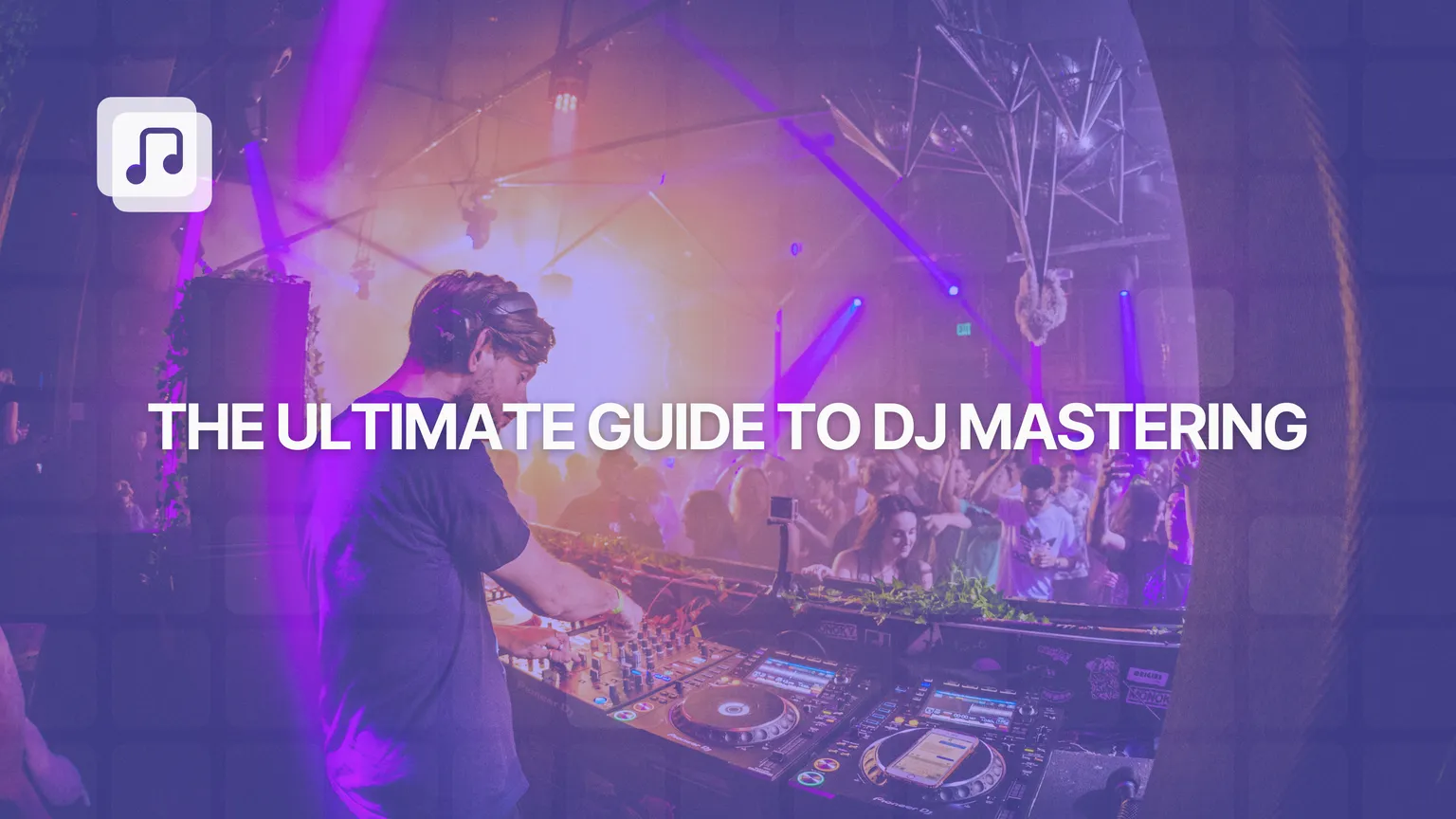
Mastering is one of the most crucial stages in music production, whether you're releasing a single track or preparing a continuous mix for a DJ set. While many associate mastering simply with increasing volume, the truth is that it involves a delicate balance of technical precision and creative decision-making. In this guide, we will explore the world of DJ mastering, how it differs from traditional mastering, and why it is essential for delivering mixes that sound polished, powerful, and ready for live performances or streaming platforms.
What is DJ Mastering?
Traditional mastering focuses on preparing a final track for distribution on platforms like Spotify, Apple Music, or CD release. The goal is to ensure a balanced tonal spectrum, appropriate dynamic range, and consistency across different playback systems. For example, a mastered track should sound good whether it’s played on studio monitors, headphones, or car speakers.
DJ mastering, however, takes a slightly different approach. It’s designed for continuous mixes, where multiple tracks are blended together to create a seamless listening experience. The aim is not just to polish a single track but to ensure that the entire mix sounds coherent and maintains energy throughout. DJ mastering ensures that transitions between songs are smooth, volumes are consistent, and frequencies don’t clash, which is especially important for live performances and club settings.
In other words, while traditional mastering is about making a track “release-ready,” DJ mastering is about making a set “performance-ready.”
Key techniques in DJ mastering
DJ mastering combines the art of mixing with the science of sound enhancement. Here are some essential techniques that every DJ should know:
1. Equalization (EQ)
EQ is the process of adjusting different frequency bands to achieve a balanced and clear sound. For DJs, EQ is crucial because it allows each track in the mix to occupy its own space in the frequency spectrum. For instance, you might reduce the low frequencies on one track to prevent clashing with the bass of the next track. A well-applied EQ can make a mix sound fuller, clearer, and more professional.
2. Compression
Compression is used to control the dynamic range of a track, meaning it manages the difference between the quietest and loudest parts. For a DJ set, compression helps maintain a consistent volume, ensuring that sudden spikes or drops don’t disrupt the energy of the performance.
3. Limiting
Limiting is a type of compression that prevents clipping, which occurs when the audio signal exceeds the maximum level a system can handle. Proper limiting increases the perceived loudness of a track without introducing distortion, giving your mix the punch it needs for a club environment or streaming platform.
4. Stereo imaging
Stereo imaging expands the perceived width of your mix. By carefully placing elements in the left and right channels, you can create a more immersive listening experience. This technique is especially important for live DJ sets, where a broad stereo image can fill a venue and captivate the audience.
5. Normalization
Normalization adjusts the overall level of a track or mix so that its peaks reach a standard level. This ensures that your mix is neither too quiet nor too loud, making it compatible with other tracks in a playlist or DJ set.

Recommended tools for DJ mastering
While mastering can be done with basic tools, using professional software and plugins greatly improves results. Here are some highly recommended options:
- DAWs (Digital Audio Workstations): Ableton Live, Logic Pro, FL Studio. These programs allow you to apply mastering effects and monitor your mix in real time.
- Mastering Plugins: iZotope Ozone, FabFilter Pro-L, Waves L2. These plugins provide precise control over EQ, compression, limiting, and stereo enhancement.
- Spectrum Analyzers: Tools that visualize the frequency distribution of your mix, helping you identify areas that need adjustment.
- Metering Tools: Software that measures loudness, dynamic range, and phase correlation to ensure your mix meets professional standards.
Using the right tools makes a significant difference in the quality of your DJ mastering, allowing you to achieve a polished, club-ready sound.
If you want to discover more about music promotion ora production, go check blog out so you'll be able to be always updated!
Why DJs should master their own mixes
Some DJs might think that mastering is unnecessary, especially if their audience is primarily listening through speakers in a small venue. However, mastering your own mixes offers multiple advantages:
1. Consistent sound
Mastering ensures that every track in your set has a uniform volume and tonal balance. This consistency prevents abrupt changes in energy, keeping your audience engaged and making transitions smoother.
2. Enhanced impact
A well-mastered mix sounds more powerful and professional. By carefully balancing frequencies, applying compression, and controlling dynamics, your mix gains clarity, punch, and presence that stand out in both live and streamed environments.
3. Universal compatibility
Mastering ensures your mixes sound good on any system, from headphones to large club speakers. This universal compatibility is essential for DJs who perform in diverse settings or release their mixes online.
4. Artistic control
Mastering your own mixes gives you complete creative control over the final sound. You can highlight certain elements, shape the energy of your set, and make artistic choices that reflect your personal style.
Conclusion
Mastering is not just a technical step, it’s a crucial part of crafting a professional DJ set. Whether you’re preparing a set for a live performance or releasing a mix online, investing time in mastering ensures that your music sounds cohesive, powerful, and engaging.
By understanding the principles of EQ, compression, limiting, stereo imaging, and normalization, and by using the right tools, you can elevate your mixes to a professional level. DJ mastering may take practice and experimentation, but the results are well worth it: a polished sound that captivates your audience, enhances your performance, and sets you apart in the competitive world of music.
However, mastering your music is only part of the journey. Once your mixes are polished and ready, it’s equally important to promote them effectively so they reach a wider audience. This is where platforms like Matchfy come into play. Matchfy helps DJs and producers share their music with the right listeners, connect with other artists, and increase their visibility online. Combining professional mastering with strategic promotion is the key to growing your career and making your music heard around the world.

